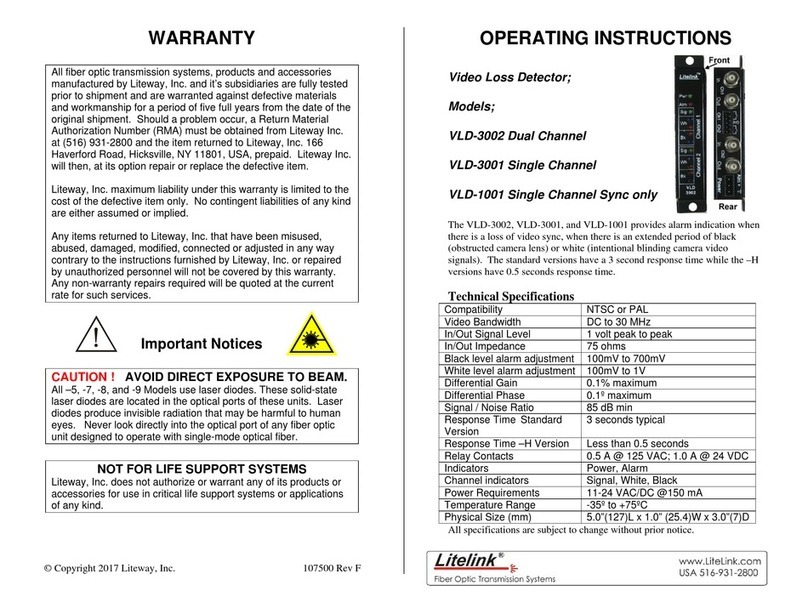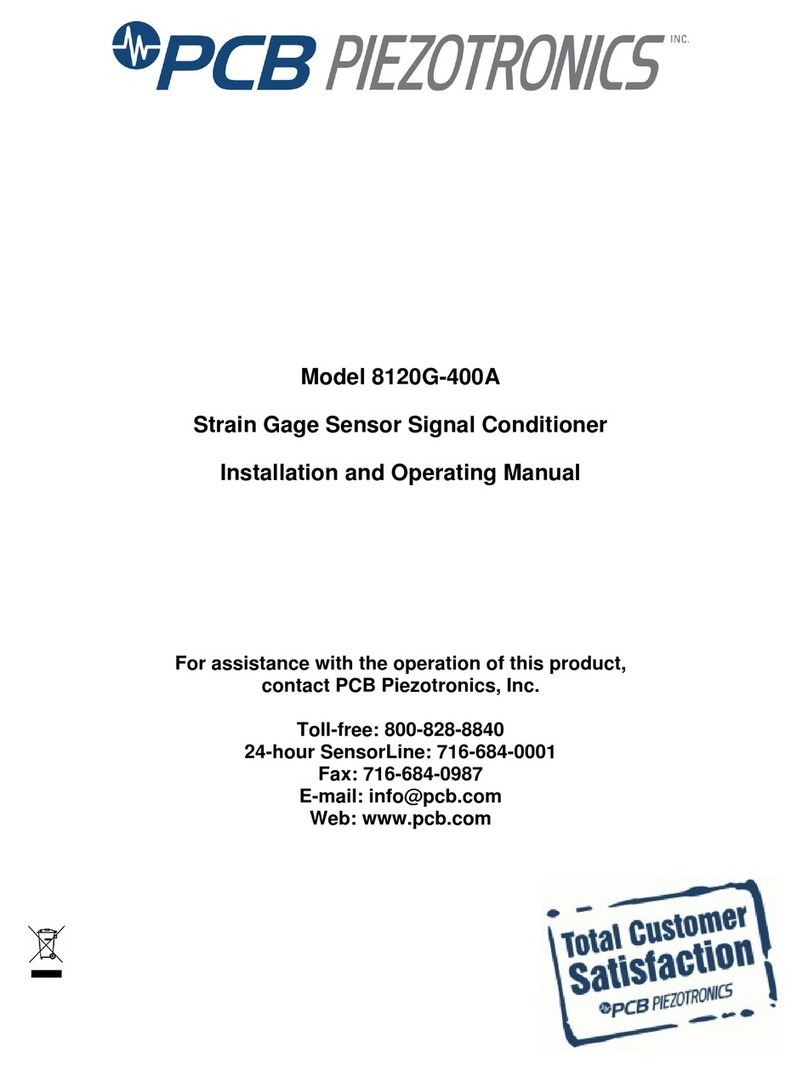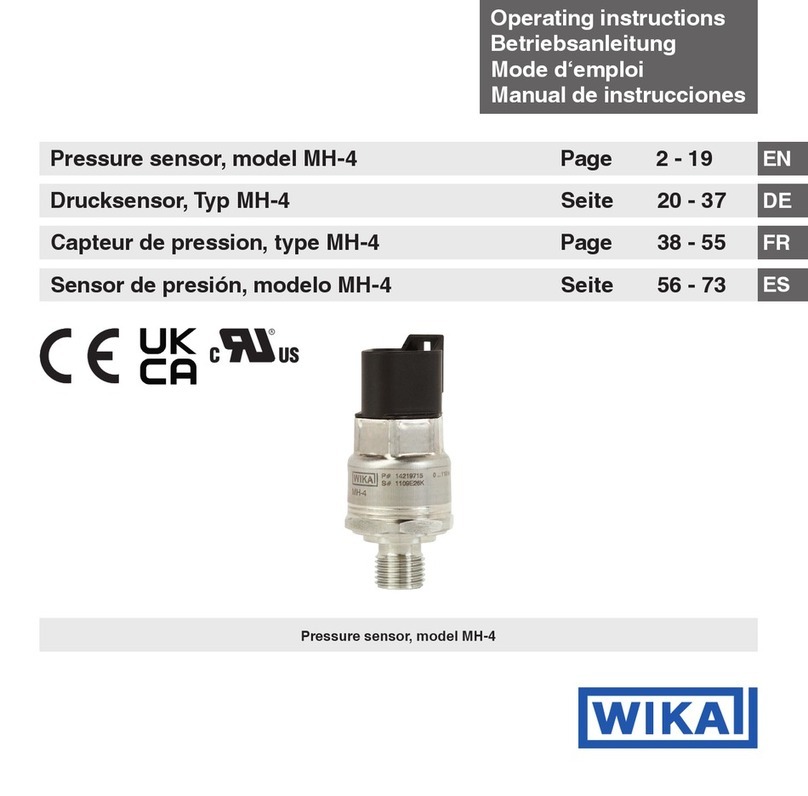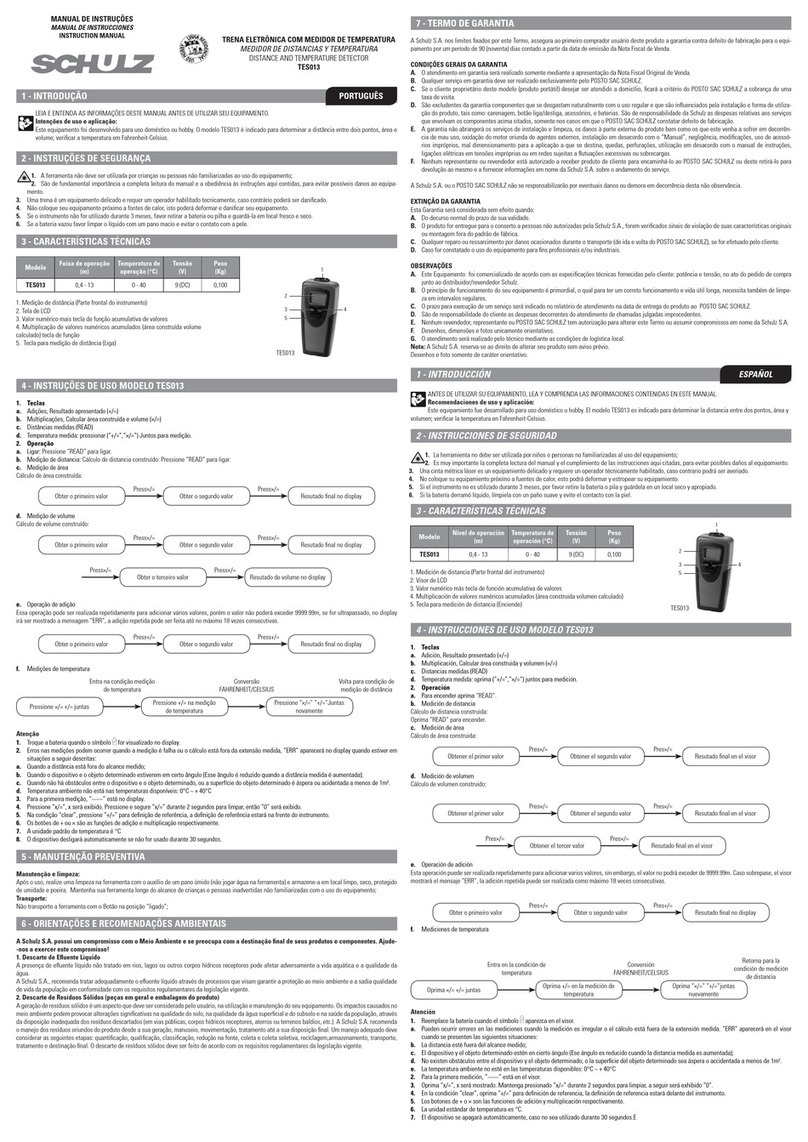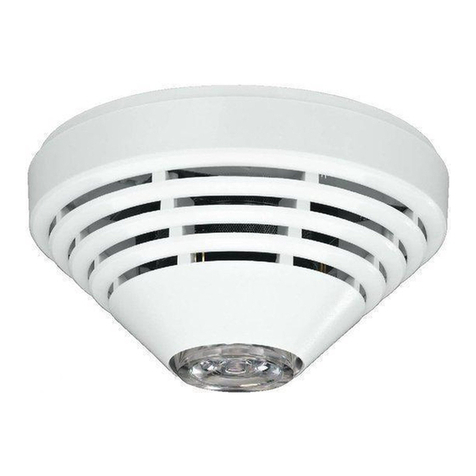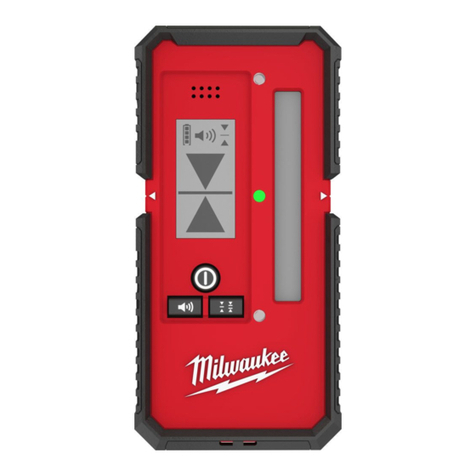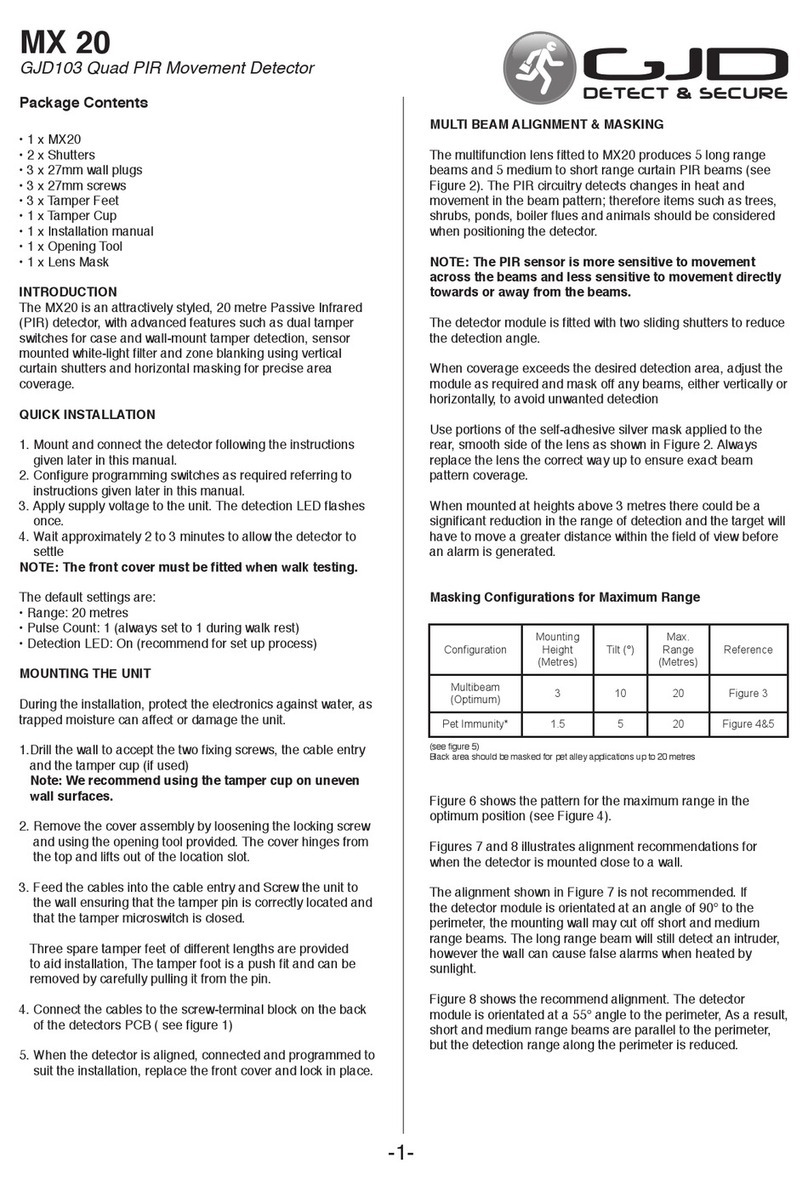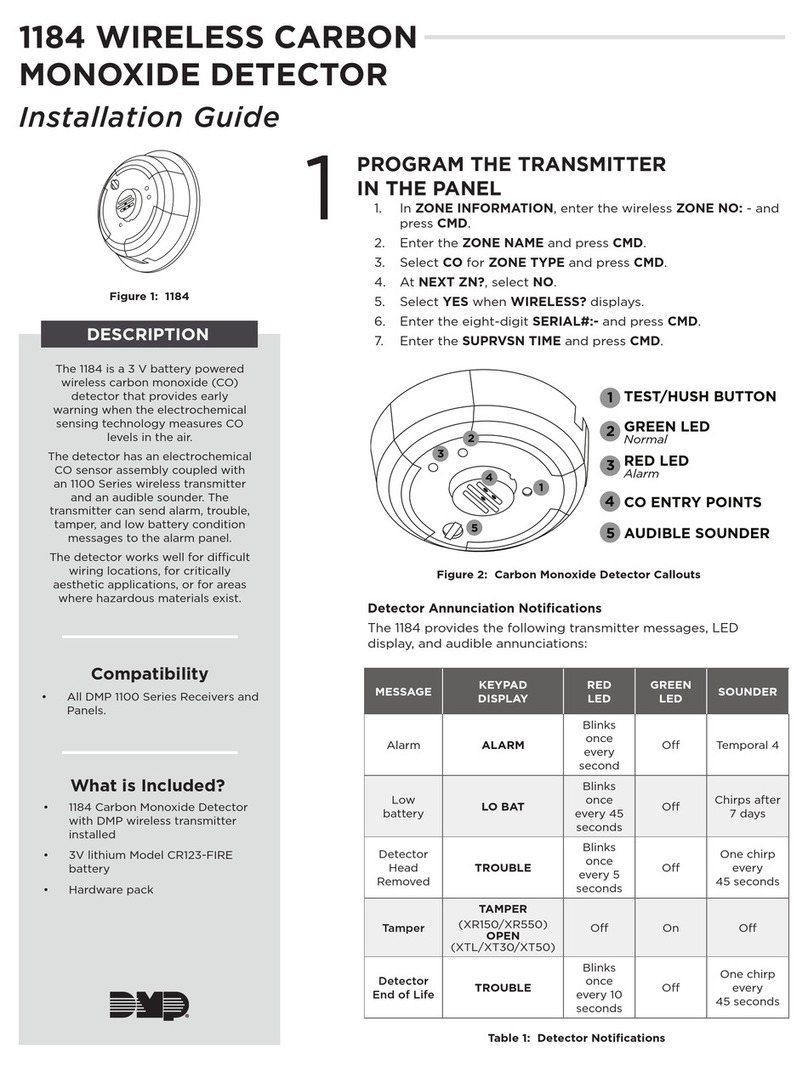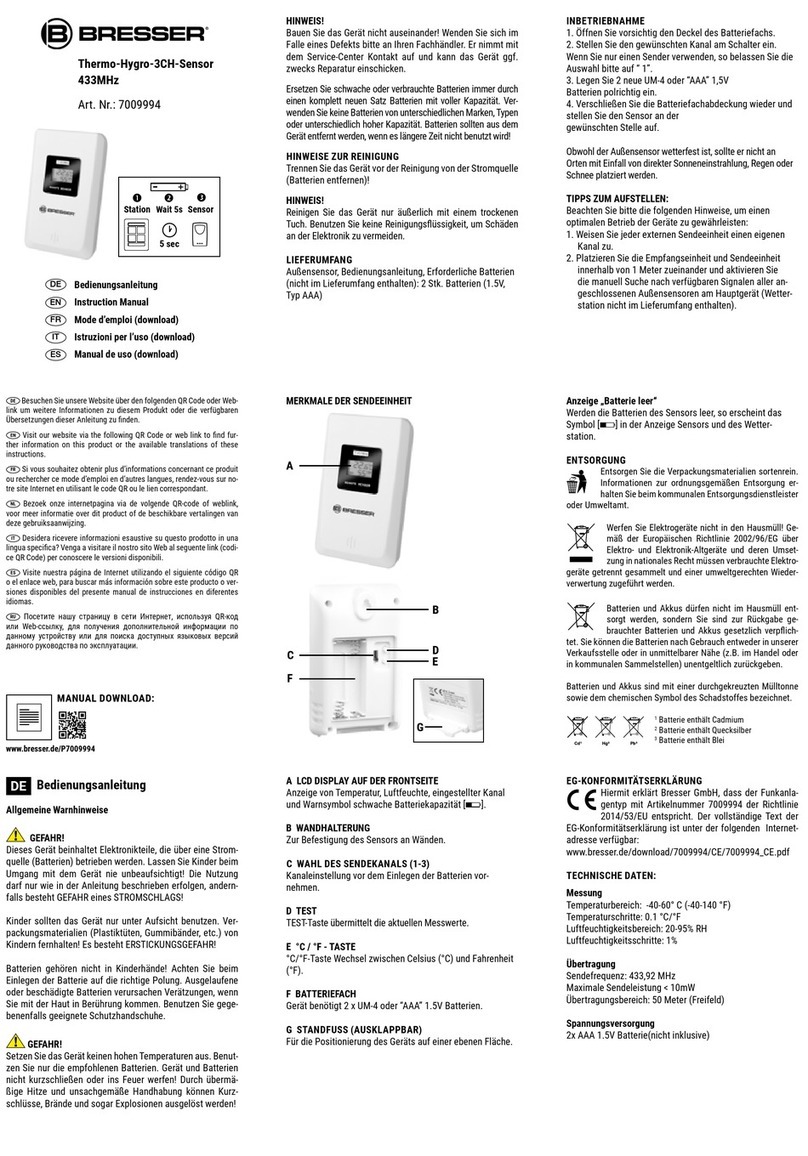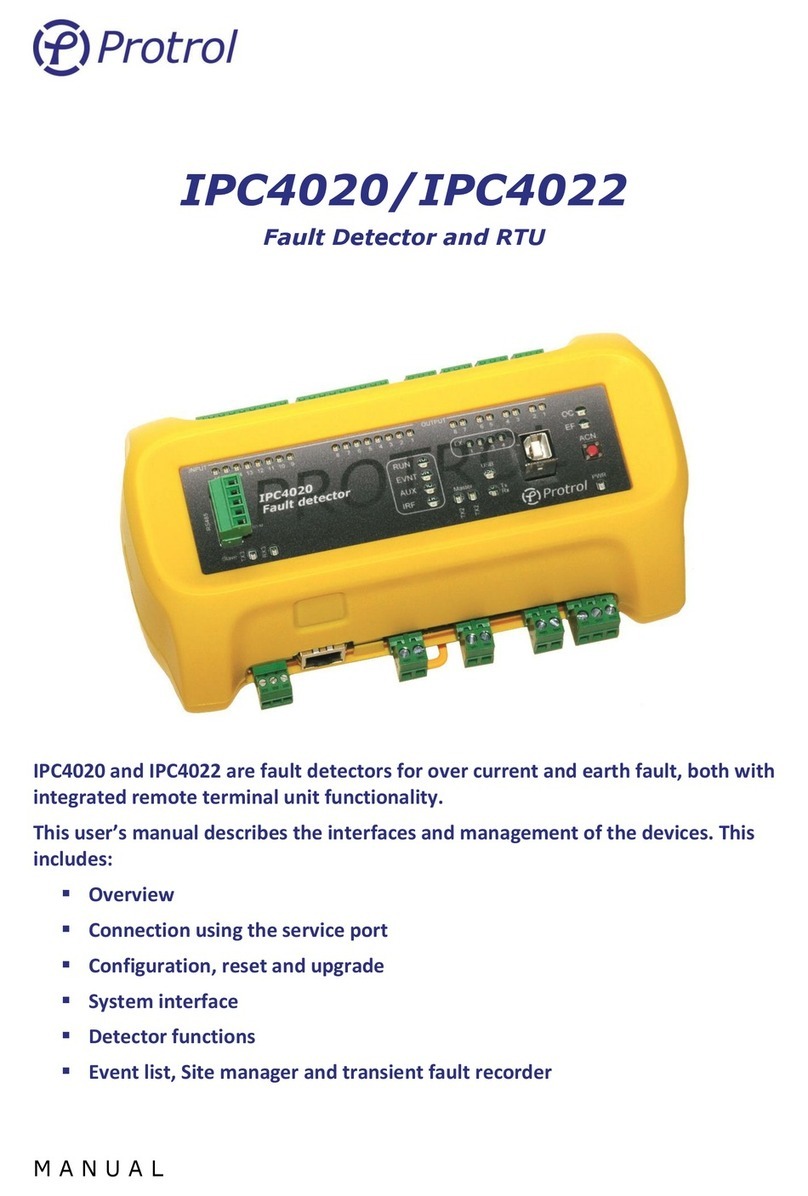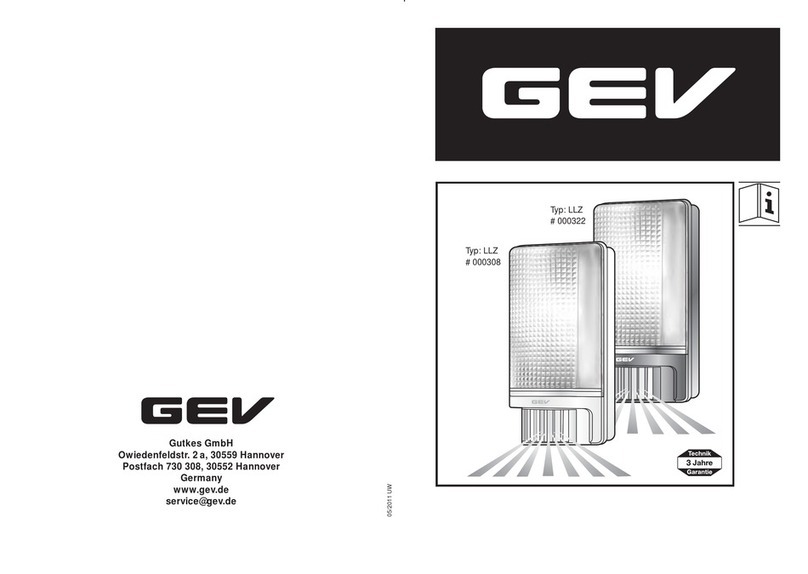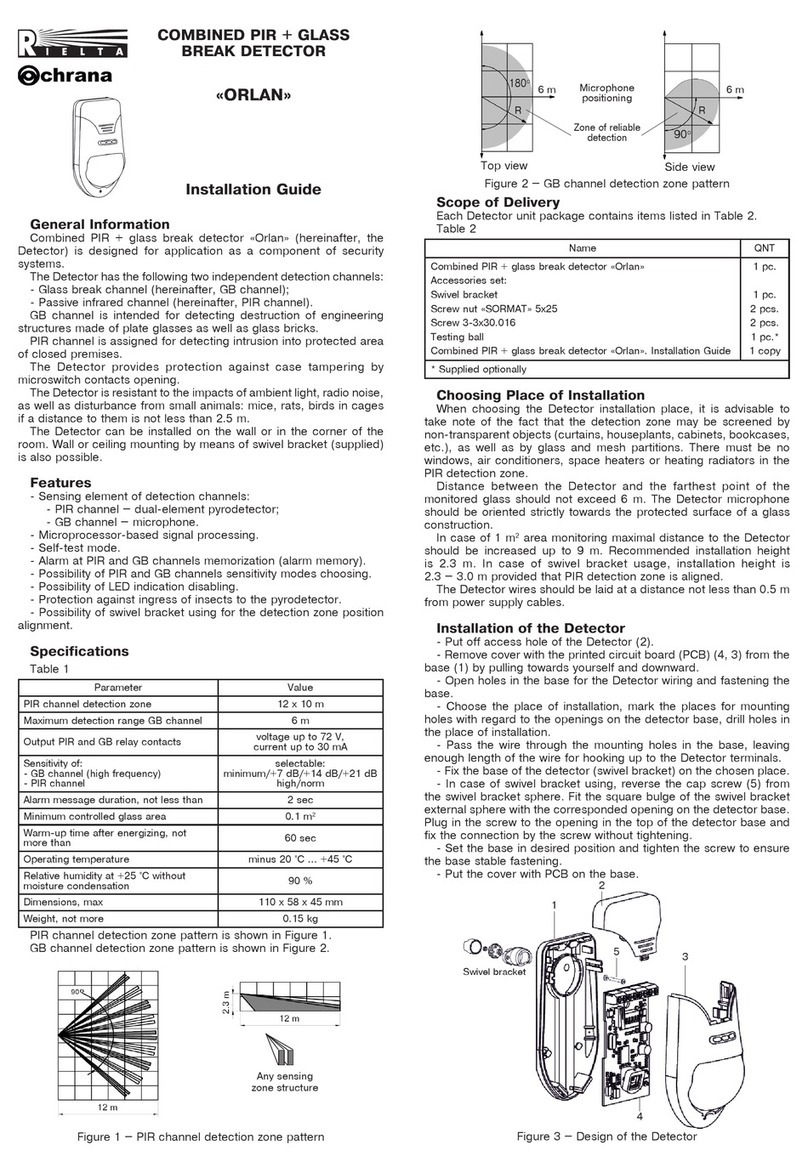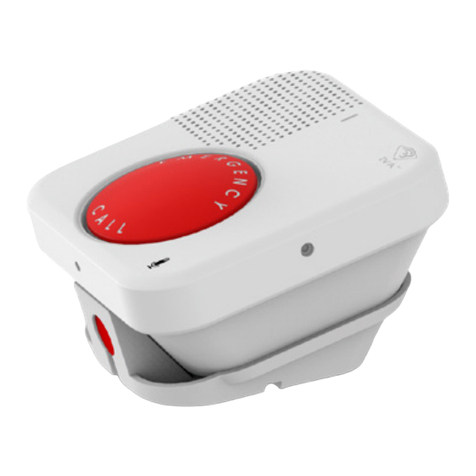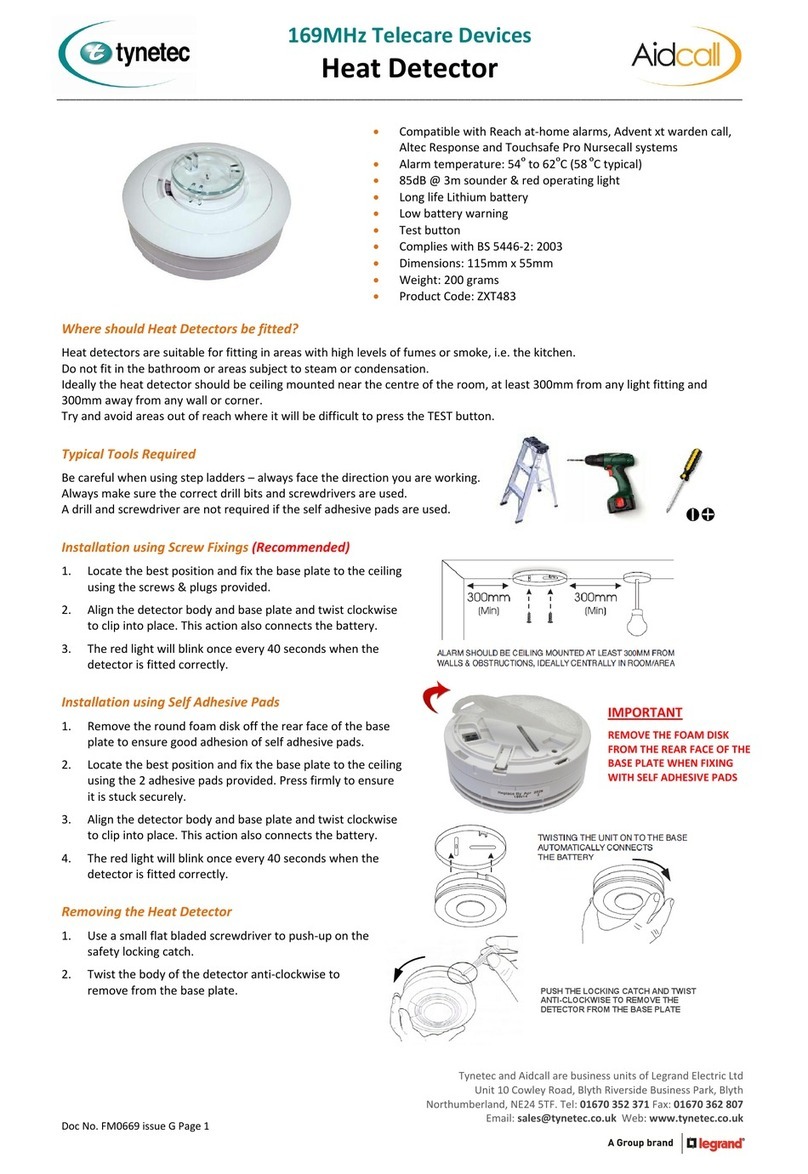Newport 1621 User manual

USER’S GUIDE
Nanosecond Photodetectors
Models 1621 & 1623
These photodetectors are sensitive to electrostatic
discharges and could be permanently damaged if
subjected even to small discharges. Ground your-
self adequately prior to handling these detectors or
making connections. A ground strap provides the
most effective grounding and minimizes the
likelihood of electrostatic damage
phone: (877) 835-9620
e-mail: tech@newport.com • www.newport.com

Warranty
Newport Corporation guarantees its products to be free of defects for one
year from the date of shipment. This is in lieu of all other guarantees,
expressed or implied, and does not cover incidental or consequential loss.
Information in this document is subject to change without notice.
Copyright 2022 Newport Corporation. All rights reserved.
The New Focus logo and symbol are registered trademarks of Newport
Corporation
Document Number 90099917 Rev. A

Nanosecond Photodetectors Contents • 3
Contents
Operation 5
Introduction . . . . . . . . . . . . . . . . . . . . . . . . . . . . . . . . . . . . . . . . . . . 5
Using the Photodetector . . . . . . . . . . . . . . . . . . . . . . . . . . . . . . . . 7
Conserving Signal Strength . . . . . . . . . . . . . . . . . . . . . . . . . . . . . 8
Supplying your own load resistor. . . . . . . . . . . . . . . . . . . . . . . . 9
Checking and Replacing the Battery . . . . . . . . . . . . . . . . . . . . 10
General Features and Principles 11
Photoreceiver Circuitry . . . . . . . . . . . . . . . . . . . . . . . . . . . . . . . . . 11
Frequency and Time Response . . . . . . . . . . . . . . . . . . . . . . . . . . 11
Using Filters and Optical Fiber 15
Characteristics 17
Physical Specifications . . . . . . . . . . . . . . . . . . . . . . . . . . . . . . . . . .17
Photodetector Specifications . . . . . . . . . . . . . . . . . . . . . . . . . . . .18
Customer Service 19
Technical Support . . . . . . . . . . . . . . . . . . . . . . . . . . . . . . . . . . . . . .19
Service . . . . . . . . . . . . . . . . . . . . . . . . . . . . . . . . . . . . . . . . . . . . . . . . .19

4 • Contents
This page has been intentionally left blank.

Nanosecond Photodetectors Operation • 5
Operation
Introduction
The Model 162X is a general-purpose battery-powered
photodetector for measuring optical signals down to
nanosecond time scales.
There are two versions of the Model 162X detector,
each based on a different photodetector diode:
Model Wavelength Type Diam.
1621 350–1000 nm silicon/PIN 0.8 mm
1623 800–1700 nm InGaAs/PIN 0.1 mm
(with a 1.5-
mm ball
lens)
Complete specifications for the Model 162X
nanosecond photodetectors begin on page 17.
This product is ideal for detecting light pulses or
monitoring optical signals from DC to several hundred
MHz where an electronic amplifier is not required. The
large-diameter detectors and the DC response make
alignment and operation of the Model 162X easy.
Figure 1 shows the typical responsivity curves for the
photodetectors used in the Models 1621 and 1623.

6 • Operation
Figure 1:
Typical
responsivities
of
Model 1621
and Model
1623
0.0
0.2
0.4
0.6
0.8
1.0
Wavelength, nm
200 400 600 800 1000 1200 1400 1600 1800 2000
Responsivity, A/W
Model 1621
Model 1623
Each Model 162X photodetector runs off a single 9-volt
alkaline battery. The photoreceiver’s slim casing,
shown below, makes it easy to position it in a set-up
between closely spaced optics. The switches and BNC
output connector are located on top of the receiver for
easy access.
Figure 2:
Model 162X
casing
Photodetector
Power switch Battery-check LED
Load-resistor switch
Output (BNC)
8-32 (M4)
Mounting
threads
A full mechanical diagram of the Model 162X casing is
available on page 17.

Nanosecond Photodetectors Operation • 7
Using the Photodetector
1. Check the battery voltage. The Model 162X is
powered by a single 9-volt alkaline battery. To
check the battery condition, push the red power
switch to the BATT CHK position. If the green LED
lights up, the battery is in good condition; if the
LED does not light, the battery needs to be
replaced (see page 10).
2. Mount the photodetector. Use the 8-32 thread (M4
for metric versions) on the bottom of the casing to
mount the photoreceiver to a post or pedestal.
The threading is seated in a non-conductive plastic
pad to reduce the electrical noise associated with
ground loops. Be careful not to over-tighten when
attaching the casing to a post or pedestal, or the
threaded insert can strip out of the plastic pad.
3. Connect the detector output. Connect your
voltmeter, oscilloscope, or other instrument to the
Output BNC connector on top of the detector.
4. Turn the power switch to “on.” The output voltage
should register on your scope or instrument.
5. Align an optical beam onto the detector.
Be careful to keep the optical power under the
maximum optical power of 50 mW to avoid
damaging the photodetector.
6. Select the load. Use the black switch on top of the
detector to set the load to 50 , 10 k, or Open.
(Select Open if you are providing an external load
resistor. See “Supplying your own load resistor” on
page 9.)
7. Turn the detector off. When you are finished with
the detector, return the power switch to the “off”
position.

8 • Operation
Conserving Signal Strength
If you have a low-power signal, 50 of trans-
impedance gain can lead to very small output voltages.
If you need to conserve signal strength, it is important
to focus your optical beam onto the photodiode.
Adjusting the photodiode position for optimal signal is
best performed as a two-step procedure:
1. Set the load resistance to 10 kor Open.
2. Hook the detector output directly into an
oscilloscope or other voltage-measurement device
with a large input impedance.
3. Adjust the photodiode position (in both transverse
and focus directions) for maximum DC voltage.
For optical signal levels above about 1 mW (at 10
k), the voltage will saturate. Remember, the
output voltage can only rise up to the battery
voltage—9 V when the battery is fresh. If you use
the 1-Minput impedance of an oscilloscope,
saturation is even easier to reach.
4. Select the 50-resistor, or supply your own small
load resistance suitable to your gain and
frequency-response requirements. Make fine
adjustments to the photodiode position until the
maximum signal is achieved.
To compute the approximate output voltage for a given
input optical power use the relationship
Vout = Pin · R · G,
where Pin is the input optical power in watts, Ris the
photodetector’s responsivity in A/W (see page 6 for
typical responsivities), and Gis the load resistance (V/
A). For example, with 10 mW of optical power, a
responsivity of 0.5 A/W, and with the load set to 50 ,
the photodetector will produce an output voltage of
approximately (10 mW) · (0.5 A/W) · (50 V/A) = 0.25 V.

Nanosecond Photodetectors Operation • 9
Supplying your own load resistor
At high frequencies, typical resistors begin to exhibit
parasitic inductance and capacitance. For instance, if
you want to operate on the Open setting and supply
your own 100-resistor, you might be tempted to use
a standard carbon-film resistor soldered across the
terminals of a BNC tee. The problem with this
approach is that the parasitic inductance of such a
home-made resistor will cause a significant change in
the impedance at high frequencies. So, for best results
you may need to buy a precision load resistor that is
optimized for high-frequency use.
You must also watch out for impedance mismatch
problems. The internal transmission line from the
photodiode to the BNC output has a characteristic
impedance of 50 . This has been chosen for best
compatibility with 50-impedance equipment. If you
terminate this transmission line with a non-50-load,
you should expect degraded frequency response.
When you use 50-impedance equipment, you
should switch the nanosecond photodetector into the
Open position. If you leave the internal 50-resistor
switched in, the photocurrent will be divided between
the two loads, cutting your signal in half. If you leave
the internal 10-kresistor switched in, it will have little
effect, as the 50-load will draw the majority of the
photocurrent.
DC blocking devices are a potential source of
confusion. Some sensitive high frequency equipment
requires 0 V at DC input. In this case, we recommend
that you put a high-frequency DC blocking load
between the nanosecond detector and your
equipment. If so, you must supply a DC path to ground
for your photocurrent. This is easiest to do by
switching in the photodetector’s 50-internal load
resistor. If you switch in the 10-kload resistor, you

10 • Operation
must be certain that the circuit does not saturate itself
on the DC level.
Checking and Replacing the Battery
The Model 162X is powered by a single, standard 9-volt
battery. The battery lifetime depends on the load
resistor and on the optical input power to the
photodetector. Under normal operating conditions the
battery lifetime will typically be greater than 500
hours.
To check the condition of the battery, push the red
switch to the BATT CHK position. If the green LED
lights up, the battery is in good condition.
When the battery voltage falls below about 6.5 volts,
the green LED will not light up, and the battery should
be replaced.
Replacing the Battery
1. Turn the red power switch to “off” to prevent
damage to the receiver.
2. Remove the screw on the back of the
photodetector casing and remove the back cover.
3. Unplug the old battery.
4. Install a new 9-volt alkaline battery.
5. Reinstall the back cover.
6. Test the new battery’s status by pushing the power
switch to the BATT CHK position.

Nanosecond Photodetectors General Features and Principles • 11
General Features and Principles
Photoreceiver Circuitry
The circuitry inside the Model 162X consists of a
reverse-biased photodetector and a load resistor with
three settings: 50 , 10 k, and Open. The 50-setting
has 50-V/A sensitivity and can be used to achieve the
1-nanosecond response time. The 10-ksetting has a
reduced time response but gives a higher sensitivity
(10,000 V/A) and can be used for alignment purposes
and for detecting low-power pulses. The Open setting
allows you to hook-up your own external load resistor
and choose the best gain-bandwidth combination for
your application.
Figure 3:
Functional
schematic of
the Model 162X
circuitry
Output
Open
10 kΩ50 Ω
ON
+V
LED
Battery Check
Circuit
OFF
Batt
Chk
Frequency and Time Response
The nanosecond photodetector circuitry is quite
straightforward, consisting only of the photodiode,
battery bias and a selectable load resistor. The speed
limitation of the circuit is established by the junction
capacitance of the photodiode and the load resistance

12 • General Features and Principles
value. Figures 4 and 5 give typical frequency responses
and pulse responses for the Model 162X photodetector.
Figure 4:
Typical
frequency
response for
the Model 1623
on the 50-¾
setting
0 100 200 300 400 500 600
Frequency, MHz
Gain (10 dB/div)
When performing high-speed measurements,
impedance-matching effects between your
measurement apparatus and the photo-detector must
be taken into consideration in order to achieve optimal
high-speed response.
Typical laboratory measurement equipment may
prevent you from achieving nanosecond response
times. BNC connectors do not match 50-
transmission lines well for frequencies above 100 MHz.
The frequency response is therefore not flat between
100 MHz and 500 MHz.
Above 500 MHz, the situation can be worse, with
typical BNC connectors and cables proving to be quite
lossy. Therefore, while the time response of the
nanosecond detector is quite fast, it is not expected to
provide flat frequency response in the 100-MHz to
500-MHz regime.
Selecting the internal 50-resistor will usually allow
you to achieve a response speed which is limited by
your detection equipment. Typical laboratory
oscilloscopes, for instance, have only 10-MHz to
100-MHz bandwidth. When you select the 10-k

Nanosecond Photodetectors General Features and Principles • 13
resistor, the speed is RC limited, and the response
speed will typically be 50 ns.
Figure 5:
Typical pulse
response for
the (a) Model
1621 and (b)
Model 1623
photodetectors
0246810
Time (ns)
(a) Model 1621
0246810
Time (ns)
(b) Model 1623
A 0.15-ps pulse at 1.06 µm was used to test the
photodetectors, and the output was measured
using a 12-GHz oscilloscope.

14 • General Features and Principles
This page has been intentionally left blank.

Nanosecond Photodetectors Using Filters and Optical Fiber • 15
Using Filters and Optical Fiber
Newport offers accessories, sold separately, to attach a
1"- diameter filter or an optical fiber to the detector.
Both accessories attach tothe casing using the 1.04-32
threads located in the casing around the detector.
Note that the accessories are also compatible with the
Model 215X femtowatt photoreceiver.
The Model 1280 1"filter holder allows you to mount a
1"- diameter optic in front of the photodetector. For
instance, you can mount a colored glass filter to
remove unwanted wavelengths or a neutral-density
filter toattenuate the optical power incident on the
photodetector. The Model 1280 has a plastic ring for
mounting a filter that is up toabout 0.25" (6.4-mm)
thick. A thicker optic can be held in place using the
6-32 nylon-tipped set screw. Use a 1/16" or 1.5-mm
Allen key or ball-driver toadjust the set screw.
The Model 1281 FC fiber adapter allows you to
connect an FC connectorized fiber to the front ofthe
photodetector. The coupling efficiency of light from an
optical fiber to the Model 1623 photodetector is
typically 70% or greater. The coupling efficiency is
less than unity because of the small detector size and
small variations in the mechanical position of the
detector and the fiber.
See Figure 6 for drawings ofthese two accessories. A
variety of fiber couplers, fiber collimators and pigtails
are also available from Newport.

16 • Using Filters and Optical Fiber
Figure 6:
Model 1280
1" filter holder
and the
Model 1281 FC
fiber adapter
0.63"
(15.9)
Model 1280
patent pending
dia. 1.30"
(33.0)
holes for
tightening
1.04-32
thread
Retaining ring
for holding 1"
or 25-mm optics.
6-32 nylon-tipped
setscrew for
holding 1" or
25-mm optics.
0.13"
(3.2)
FC connector
holes for
tightening
1.04-32
thread
0.35"
(8.9)
0.19"
(4.8)
Model 1281

Nanosecond Photodetectors Characteristics • 17
Characteristics
Physical Specifications
Figure 7:
Mechanical
drawing of the
Model 162X
casing
4.03
(102.3)
1.00
(25.4)
1.25 (31.8)
1.040-32
Threaded hole
1.16
(29.5)
Battery check LED
2.50 (63.5)
Output (BNC)
Load resistor switch
Power switch
8-32 (M4)
Threaded insert

18 • Characteristics
Photodetector Specifications
Model # 1621 1623
Wavelength Range 350-1000 nm 800-1700 nm
Detector Material/Type Silicon/PIN InGaAs/PIN
Detector Diameter 0.8 mm 0.1 mm (with 1.5-
mm-diameter ball
lens)
Typical Max. Responsivity 0.55 A/W (at 800
nm)
1.0 A/W (at 1600
nm)
Maximum Optical Power 50 mW 50 mW
Load Resistors 50 , 10 k, and
Open (user
provided)
50 , 10 k, and
Open (user
provided)
Typical Rise Time 1 nanosecond (50-
setting)
1 nanosecond (50-
setting)
Typical detector capaci-
tance
3 pF 0.8 pF
Electrical Output Connec-
tor
BNC BNC
Power Requirements One 9-volt alkaline
battery
One 9-volt alkaline
battery
Typical Battery Lifetime >500 hours >500 hours

Nanosecond Photodetectors Customer Service • 19
Customer Service
Technical Support
Service
Information and advice about the operation of any Newport
product is available from our applications engineers. For quickest
response, ask for “Technical Support” and know the model
number and serial number for your product.
Hours: 8:00–5:00 PST, Monday through Friday (excluding
holidays).
Phone: 1-877-835-9620
Support is also available by email and chat
Chat: Connect with us at www.newport.com
Email: [email protected]
We typically respond to emails within one business day.
In the event that your device malfunctions or becomes damaged,
please contact Newport for a return merchant authorization (RMA)
number and instructions on shipping the unit back for evaluation
and repair.
This manual suits for next models
1
Table of contents
Other Newport Security Sensor manuals


